Messier 56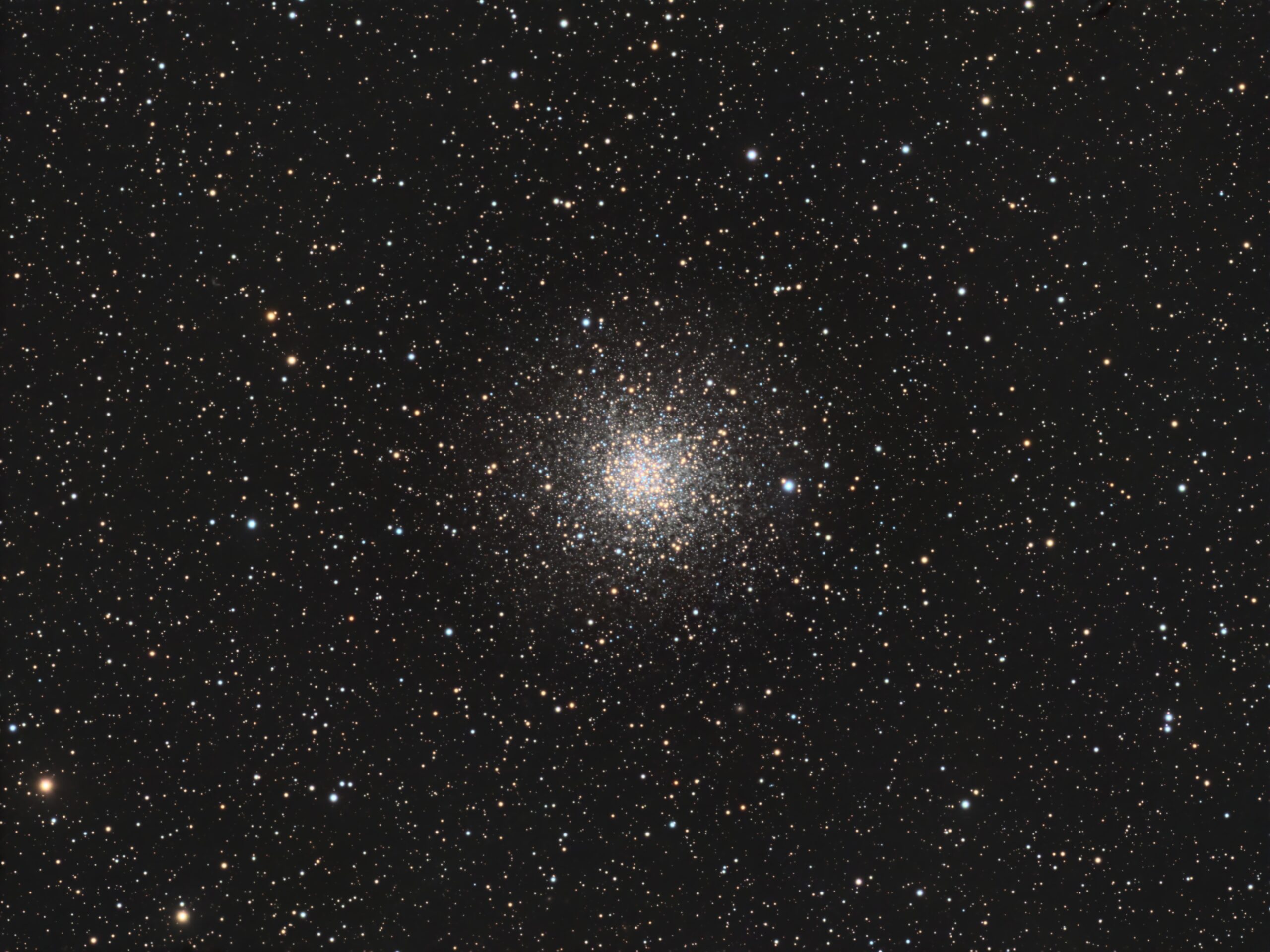
Click image for full size version
September 5, 2024
Globular cluster M56, in Lyra, the Harp, lies about 33,000 light years away. All together, its stars have a mass about 230,000 times that of the Sun. It sometimes goes unnoticed because it shares the general area of the sky with a few other iconic objects: the Ring Nebula (M57), the “Double Double” – a pair of tight, bright, white double stars – and Vega, the 5th brightest star in the sky. One of the things I like about globular clusters is how different they all are from each other. This one resolves quite well right to the core, and is set in a rich Milky Way star field. It can be hard to tell where the edge of the cluster is located. Another thing I find interesting about these objects is that they tend to be very old. M56 is estimated to be 13.7 billion years old, and may have been captured by the Milky Way from another galaxy. Its orbit around the Milky Way is retrograde, meaning it is in a direction opposite to most other similar objects. If you’re interested in globular clusters, check out my recent images of M3, M92, and M13.
Tekkies:
Acquisition, focusing, and control of Paramount MX mount with N.I.N.A., TheSkyX. Guiding with PHD2. Primalucelab low-profile 2″ Essato focuser and ARCO rotator. Equipment control with PrimaLuce Labs Eagle 4 Pro computer. All pre-processing and processing in PixInsight. Acquired from my SkyShed in Guelph. Data acquired under moderate to no moonlight, good transparency and average seeing August 26-30, 2024.
Celestron 14″ EDGE HD telescope at f/11 (3,940 mm focal length) and QHY600M camera binned 2×2 with Optolong filters.
23 x 5m Red = 1hr 55m
23 x 5m Green = 1hr 55m
20 x 5m Blue = 1hr 40m
Total: 5hr 30m
Preprocessing: The WeightedBatchPreProcessing script was used to perform calibration, cosmetic correction, weighting, registration, local normalization, and integration of all frames.
RGB master: An RGB image was made from the Red, Green and Blue masters using ChannelCombination in RGB mode.
Synthetic Luminance: A SynthL was made by integrating the three masters, weighted by SNR, with no pixel rejection.
Gradient Removal: DBE was used to remove gradients from the RGB and SynthL masters.
Colour Calibration: ColorCalibration was used to calibrate the RGB master.
Deconvolution: BlurXterminator was applied to the RGB and SynthL masters with Automatic psf , star sharpening set to 0.5, and non-stellar set to 0.5.
Linear Noise Reduction: NoiseXterminator was applied to the RGB and SynthL masters with settings Amount=0.9 and Detail=0.15
Stretching: HistogramTransformation was applied to the RGB and SynthL masters to make pleasing images. Approximate background level after stretch was 0.1 for SynthL and 0.09 for RGB.
Nonlinear Processing
Combinining SynthL and RGB: LRGBCombination was used to replace the lightness channel of the RGB image with the SynthL.
Nonlinear Noise Reduction: NoiseXterminator was used to reduce noise in the background areas of the SynthRGB master with Amount=0.9 and Detail=0.15.
Re-stretch: HistogramTransformation was used to boost contrast by moving the dark point to the toe of the histogram and slightly decreasing the mid-point slider.
Final Steps: Background, globular cluster, and star brightness, contrast, hue, and saturation were adjusted in several iterations using CurvesTransformation with masks as required. ICCProfileTransformation (sRGB IEC61966-2.1; Relative Colorimetric with black point compensation) was applied prior to saving as a jpg. The finder chart was made using the FindingChart process.

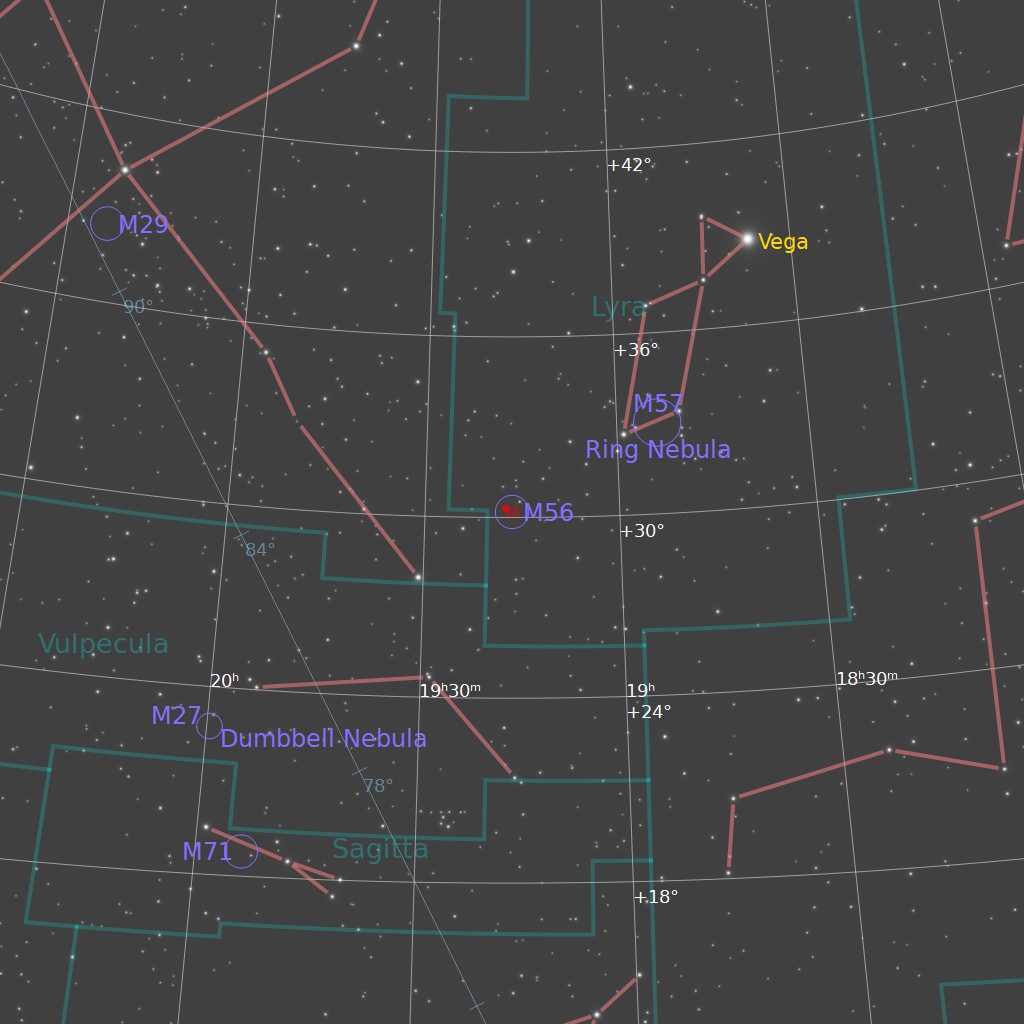

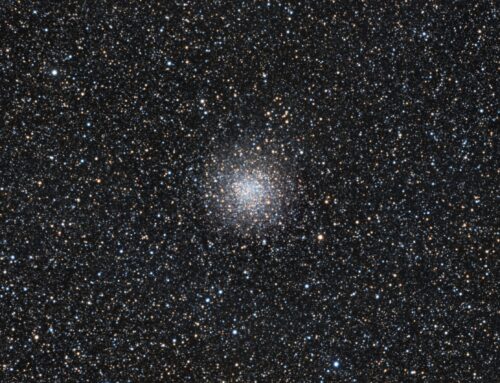
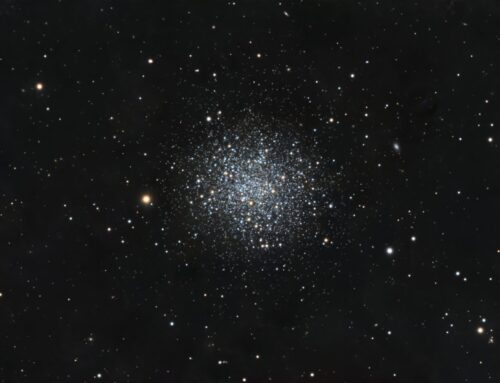
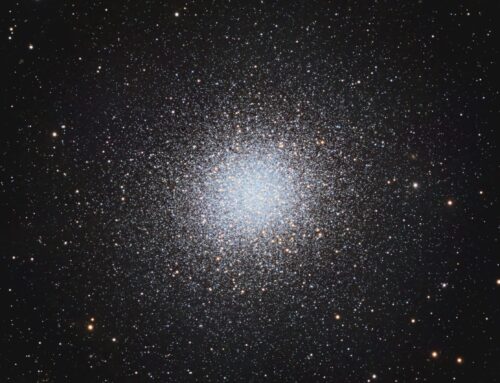
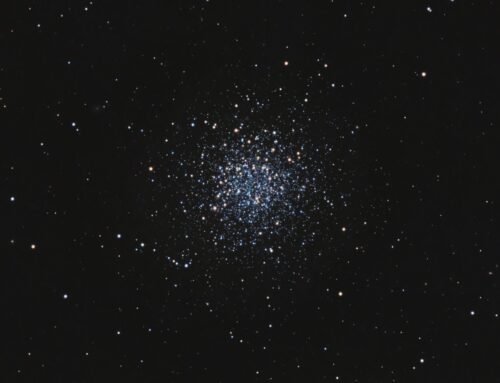
Leave A Comment